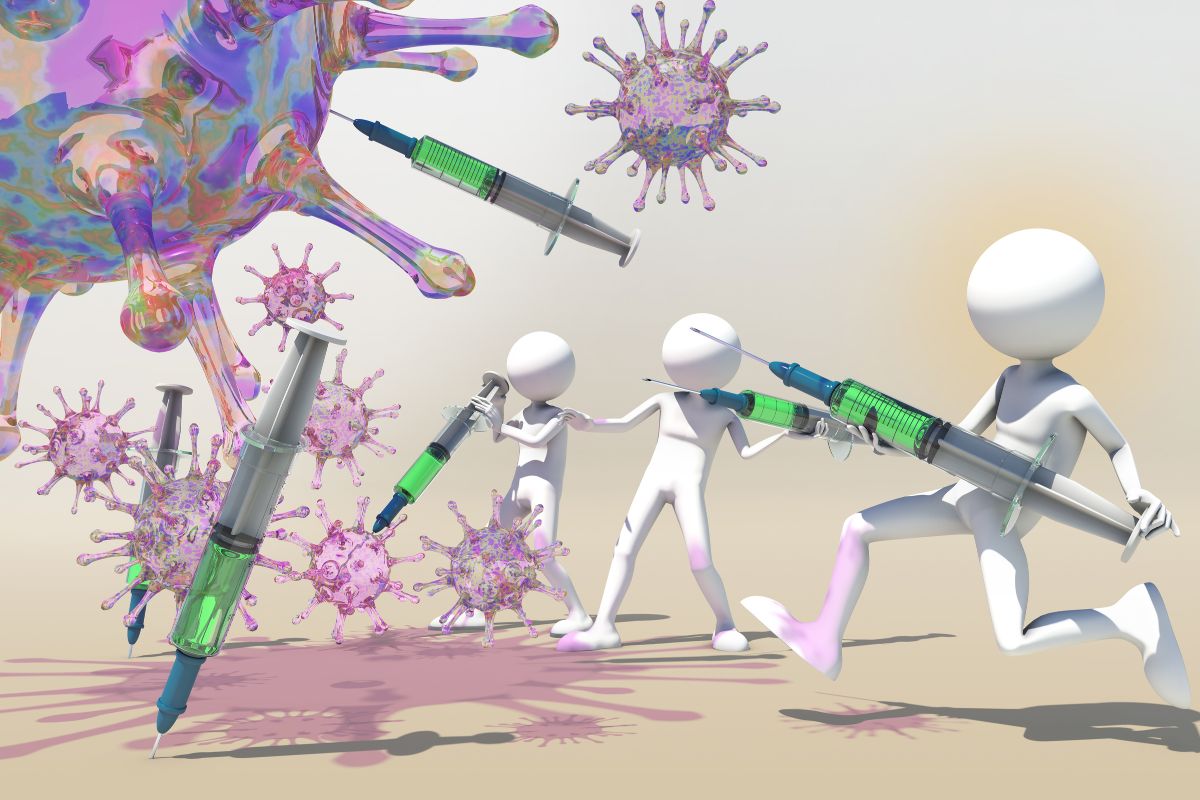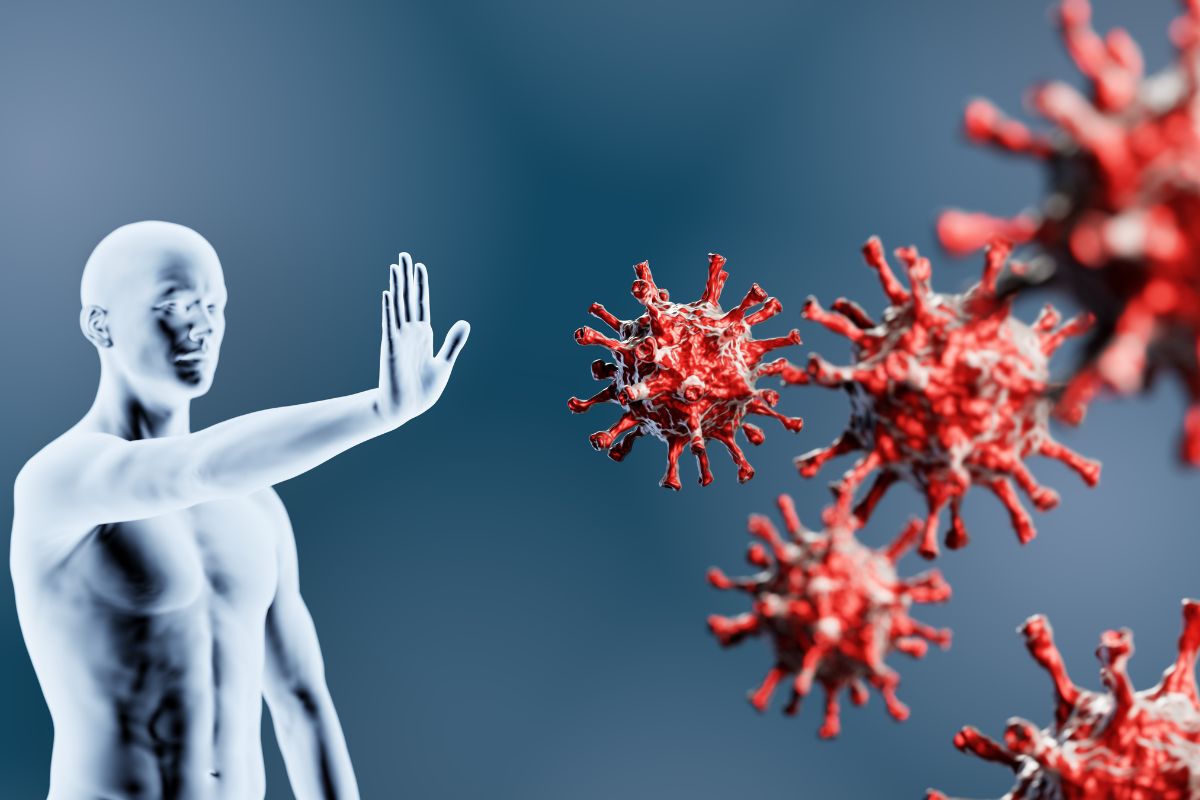What is Veterinary Cellular and Molecular Immunology?
Cellular and Molecular Immunology analyzes the cells, tissues, and organs in charge of spotting foreign substances (antigens) and launching a protective response.
The immune system and the antigen are the two main protagonists in natural immune events, whereas the immune system and vaccines must be a consideration in induced immunity. But as life evolves, these agents are not constant or uniform, so it is important to outline them carefully and how they interact.
















Our Top Book Picks for Veterinary Cellular and Molecular Immunology
Cellular and Molecular Immunology: With Veterinary Consult Access 6th Edition
Publisher: Saunders; 6th edition (September 14, 2007)
Language: English
Paperback: 566 pages
Availability: New, used, rental
Book Overview
Cellular & Molecular Immunology offers the most recent data and developments in our understanding of the host’s immunological response, both in vitro and in vivo. It covers both fundamental immunology research and clinical applications.
The Cellular and Molecular Immunology 8th edition pdf contain information on the following:
- Therapeutic immunology
- Comparing immune systems
- Immunobiology
- Methods using immunological genetics
- Immunopathology
- Immunopharmacology
- Infections and immunity
- Transplant immunology, neuroimmunology
- Immunology of tumors
- Animal immunology
CMI Immunology aims to quickly distribute the most recent research in this area to different populations worldwide. The book contains information that investigates unique concepts or counter- or unorthodox approaches, accepted scientific principles, and offers falsifiable hypotheses that you test using empirical procedures and data.
It clearly explains the most recent Cellular and Molecular Immunology impact factor. Readers worldwide praise this book’s in-depth yet clear, lavishly illustrated treatment of this complex subject throughout its five best-selling editions.
Now, comprehensive updates take into account the most recent research on innate immunity, the structure of lymphoid organs, and many other cutting-edge subjects.
Veterinary Immunology 10th Edition
Publisher: Saunders; 10th edition (December 1, 2017)
Language: English
Availability: New, used, rental
Best sellers rank: #645,513 in Books (See Top 100 in Books)
#8 in Veterinary Immunology
#220 in General (Books
Book Overview
Veterinary Immunology: An Introduction, now in its tenth edition, is the only comprehensive reference on immunology available to veterinary practitioners. This book, which explores the immunologic concerns of both large and small animals, is the only one of its kind.
This new edition has undergone extensive revisions to bring it up to date with the most recent advancements and discussions that have taken place in the relevant field. It provides a concise explanation of core immunologic ideas and in-depth and up-to-date information on the most significant immunologic illnesses and reactions you see in domestic animals.
Veterinary Immunology: An Introduction, now in its tenth edition, is the only comprehensive book on immunology available to veterinary professionals. This edition focuses on the immunologic problems that both large and small animals face. This new edition has undergone extensive revisions to bring it up to date with the most recent advancements and discussions that have taken place in the relevant field.
In it, a concise explanation of the fundamental Cell Immunology impact factor is available, as well as in-depth and up-to-date information on the most significant immunologic illnesses and responses seen in domestic animals.
In addition to providing information on the most significant immunologic illnesses and immunologic reactions you can observe in domestic animals and marine mammals, the complete coverage also explains the fundamental ideas that make up immunology.
Numerous clinical cases demonstrate how different concepts might apply after gaining knowledge in the medical field. An image library, better animations, flashcards, material updates, and a test bank specifically for teachers are some resources available to educators and students.
The newly added content is easier to understand thanks to the enhancements made to the graphics, which also increases readability.
New interleukins, T-cell subpopulations, cancer immunotherapy approaches, fish immunology, and genomics discoveries are some of the topics covered in this updated information. The beginning of each chapter will now include a list of learning objectives.
The function of commensal bacteria in veterinary immunology will be available in the chapter on commensal bacteria, and strong reasons for events that were previously difficult to understand will also be in this chapter.
Now, veterinarians who treat pets for dermatological conditions can reap the benefits of information on the pathophysiology of atopic dermatitis and therapeutic options for the condition.
The huge expansion in the knowledge available in the field of cancer immunology during the past five years is in newly updated information.
An investigation into the data of persons who make claims regarding the nutritional benefits of certain foods is necessary by the need for a more comprehensive understanding of how diet affects animal immunity.
Histology photos previously only available in black and white are updated to include full-color versions.
Veterinary Immunology: Principles and Practice, Second Edition
Publisher: CRC Press; 2nd edition (June 23, 2014)
Language: English
Paperback: 336 pages
Availability: New, used, rental
Best Sellers Rank: #1,046,118 in Books (See Top 100 in Books)
#11 in Veterinary Immunology
#56 in Food Animal Medicine
#95 in Veterinary Bovine Medicine
Book Overview
Veterinary Immunology: Principles and Practice is currently the standard text that is in use in many veterinary institutions all over the world. This second edition, which features a substantial update with new information discovered since 2011, demonstrates how rapidly the area is developing.
The most recent version covers recently discovered diseases, including bovine newborn pancytopenia, and gives increased information on commonly used diagnostic test techniques. Additionally, the most current version includes newly emerging ailments.
The following is in the book, which, structurally speaking, adheres to the same reliable pattern as its predecessor:
- The first sentence of the introduction to each chapter’s learning objectives
- There is a summary of the most critical points at the end of each chapter.
- The content presented in each chapter is in a therapeutic setting using seventeen clinical case studies.
- It contains diagrams that have standard icons to ensure coherence across the text.
- There are clinicopathological visuals included in the book, along with clinical examples.
- A glossary of terms and a list of frequently used abbreviations.
The book emphasizes immunological ideas, applies them to the sickness process and clinical practice and investigates the immunological concerns of large and small animals. Veterinary medicine students can benefit from its use as a textbook, and working veterinarians will find its reference section helpful.
Principles of Fish Immunology: Kindle Edition
Publisher: Springer (March 12, 2022)
Language: English
Print length: 1261 pages
Availability: New, rental
Format: Kindle Edition
Amazon.com Sales Rank: #2,979,933 in Kindle Store (See Top 100 in Kindle Store)
#1,464 in Oceanography (Books)
#1,552 in Veterinary Medicine (Kindle Store)
#2,156 in Zoology (Kindle Store)
Book Overview
This textbook covers the principles and the most recent developments in the field of fish vaccination and the adaptive immune systems found in fish. It also introduces the anatomy of immune organs and the molecular processes they do while describing how the host’s immune system interacts with various diseases.
The textbook is best for students majoring in veterinary medicine or fish medicine, aquaculture, or immunology. In addition, the volume can serve as a quick reference for fish pathologists and aquaculture professionals.
Chapter 2 is available without charge and is under a Creative Commons Attribution 4.0 International License, and you can access it through link.springer.com.
Basic Veterinary Immunology 1st Edition
Publisher: University Press of Colorado; 1st edition (May 15, 2014)
Language: English
Paperback: 337 pages
Availability: New, used
Best Sellers Rank: #671,992 in Books (See Top 100 in Books)
#9 in Veterinary Immunology
#232 in General (Books)
#239 in Immunology (Books)
Book Overview
The book “Basic Veterinary Immunology” gives readers a comprehensive grounding in the foundations of immunology as they apply to the field of veterinary medicine. Its purpose is to make up for the lack of resources currently available to teachers of veterinary immunology.
The theory and practice of veterinary medicine are available in this book through the utilization of a clinical framework and examples drawn from real-world scenarios. Following the introduction of a clinically significant veterinary condition at the beginning of each chapter is a presentation of an essential immunological concept about that disease.
The learning goals and a clinical correlation follow-up section are in each chapter. The clinical correlation follow-up section discusses plausible reasons for clinical presentations and includes student considerations.
In partnership with the Veterinary Information Network, students, faculty, and clinical veterinarians will have access to online resources about basic veterinary immunology. These resources will include relevant content. It consists of 250 graphics and figures in full color, which you can also refer to as PowerPoint teaching aids.
Basic Veterinary Immunology provides students with the required working understanding of veterinary immunology that will assist them in completing their academic programs and engaging in professional practice.
It is a crucial introduction to veterinary-specific immunology at the beginning level, as Melanie S. Lean of The Veterinary Record stated. Any school library would benefit from having a copy of this book on its shelves. Despite this, it can also function as a “go-to book” for new graduate clinicians thanks to its user-friendly format and a thorough index.
It fills a void in the market and, as a result, will be a valuable read for anyone who needs an understanding of immunology, whether for curriculum-based studies or to improve on existing fundamental knowledge. Although it aims at students, it fills a market void.
Some of the more difficult concepts in immunology are available in this book in a way that will promote student learning because of the book’s great illustrations and plain text, as stated by Dr. Joan Lloyd in the Australian Veterinary Journal.
In addition to that, the review activities and clinical examples will be of use here. This is the book Dr. Joan Lloyd recommends to all people who teach immunology to veterinary students.
Avian Immunology 3rd Edition, Kindle Edition
Publisher: Academic Press; 3rd edition (December 5, 2021)
Language: English
Print length: 439 pages
Availability: New
Format: Kindle edition
Amazon.com Sales Rank: #3,404,213 in Kindle Store (See Top 100 in Kindle Store)
#73 in Veterinary Immunology
#701 in Immunology (Kindle Store)
#1,011 in Animal Husbandry (Kindle Store)
Book Overview
The avian innate immune system, comprising the mucosal, intestinal, respiratory, and reproductive systems, is each broken down and thoroughly explained in the third edition of Avian Immunology. Immunodepressive illnesses, immune evasion, autoimmune illnesses, and immune system cancers are among the diseases and disorders it covers.
It emphasizes the more tangible aspects of immunization. Numerous appendices contain useful resources for researchers. These appendices include cell lines, inbred chicken lines, cytokines, chemokines, and monoclonal antibodies.
This third edition of Avian Immunology provides avian immunologists, graduate students, veterinary students, poultry health professionals, and avian biologists with the most up-to-date and essential information. It features contributions from the leading international specialists in the field.
Avian immunology is a fascinating and expanding field; the third edition of this book unquestionably presents novel and intriguing viewpoints for the field of conventional immunology in the years to come.
Reflects crucial changes available since the second edition, particularly the explosion of information regarding genomics and the work done on the genomes of the chicken, turkey, and zebra finch.
It provides an exhaustive reference that covers everything from fundamental science to the most recent cutting-edge research. In addition, it provides useful information for veterinarians, particularly those who specialize in treating poultry or companion birds.
New chapters on the interaction between the immune system and the microbiome, the defenses in the egg and embryo, and the development of transgenic technology are available.
The avian innate immune system, comprising the mucosal, intestinal, respiratory, and reproductive systems, is each broken down and thoroughly explained in the third edition of Avian Immunology. Immunodepressive illnesses, immune evasion, autoimmune illnesses, and immune system cancers are among the diseases and disorders it covers.
This book covers the more hands-on aspects of immunization. A substantial appendix includes a compilation of research resources, such as cell lines, inbred chicken lines, cytokines, chemokines, and monoclonal antibodies.
The Immune System
The study of cells, tissues, and organs inside the body responsible for detecting foreign substances (known as antigens) and initiating a protective response is immunology. This subfield of biology and biomedical sciences has been available since the 1920s.
The immune system and the antigen play a significant role in developing natural immunity. Still, only the immune system and vaccines play a substantial role in the development of induced immunity. However, as life has progressed, these agents have not stayed static or consistent; hence, it is essential to delineate them and how they interact thoroughly.
What Makes Immunology Crucial?
From Edward Jenner’s groundbreaking work in the 18th century to the numerous scientific discoveries in the 19th and 20th centuries, the identification of blood groups, and the currently pervasive use of monoclonal antibodies throughout science and healthcare, immunology played a significant role in the progression of human history.
Immunological research continually expands our understanding of treating major health issues. This is largely due to current investigations into immunotherapy, autoimmune diseases, and vaccines designed to protect against newly developing viruses.
Expanding our understanding of the fundamentals of immunology is necessary for clinical and industrial applications. It will also assist in creating innovative diagnostics and therapies for various diseases.
Immunological research has also given rise to the development of highly effective research methodologies and instruments such as flow cytometry and antibody technology. These developments have occurred concurrently with the technological improvements discussed.
The Defense Mechanism
The immune system consists of organs and mechanisms established over time to preserve good health. The immune system consists of cellular and molecular components. These components serve two basic purposes: generic or organism-inherent mechanisms and responsive responses or adaptations to specific illnesses.
Immunology studied at the fundamental or classical levels looks into the components of the innate and adaptive immune systems.
Nonspecific innate immunity serves as the first line of defense. In other words, the responses are always the same, regardless of how different possible infections may be. Innate immunity includes cells and physical barriers like skin, saliva, and others (e.g., macrophages, neutrophils, basophils, mast cells, etc.).
For the first several days after infection, an organism is in protection by these “ready to go” components. This can sometimes be sufficient to eradicate the virus, but there are other times when the first line of defense is not working anymore, and the second line of defense is necessary.
The second line of defense is adaptive immunity, which entails forming a memory of infections experienced to establish more effective protection against pathogens or foreign material. Antibodies are a component of adaptive immunity; they often target foreign pathogens free to roam in the bloodstream.
T cells, which are particularly a target towards infections that have colonized cells and can either directly kill infected cells or assist the antibody response, are also implicated.
Final Thoughts
The eighth edition of Cellular and Molecular Immunology maintains the high standard of excellence established by previous editions of this best-selling book, which is famous for excellent writing, a readable style, and stunning illustrations.
It offers a one-of-a-kind introduction to this intricate field while preserving a practical and clinical emphasis, updating and evaluating the entire book to ensure clarity and comprehension, and bringing readers up to date with new and evolving information in this challenging area.
It is an excellent resource for students of all educational levels, particularly medical, graduate, and undergraduate students. It is also a reliable source for working professionals in the fields of science and medicine.
In every section, including those that explain the implications of immunologic research for treating veterinary disease, an emphasis is on the therapeutic importance of the findings. It does it in a manner that is very visual and uses full color to describe the primary immunologic and molecular processes.
The artwork has been thoroughly modernized, updated, and standardized and features many newly drawn and significantly redrawn drawings. It provides readers with the information they want to appreciate the particulars of the experimental discoveries that serve as the basis for the scientific discipline of immunology.
These findings are in three categories: molecular, cellular, and whole-organism.
| # | Preview | Product | Price | |
|---|---|---|---|---|
| 1 |
  |
Cellular and Molecular Immunology | $7.98 | Buy on Amazon |
| 2 |
  |
BookFactory Microbiology Immunology and Molecular… | $24.99 | Buy on Amazon |
| 3 |
  |
Oral Tolerance: Cellular and Molecular Basis,… | $134.82 | Buy on Amazon |
| 4 |
  |
Molecular Mechanisms of Programmed Cell Death | $169.99 | Buy on Amazon |
| 5 |
  |
Molekulare Virologie (German Edition) | $89.99 | Buy on Amazon |







